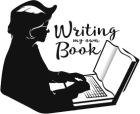Just how long should a non-fiction manuscript be? The purpose of the final document answers that question. You have to know your market before you chooser your non-fiction manuscript length. Then you will know how many words you are aiming for. I cover how to increase the length of your manuscript in the ‘Developing Your Writing Skills’ category.
Article Manuscript Lengths
Articles can fall anywhere between 350 to 5000 words. It all depends on where the article is going to be published. If you are writing articles for the internet, then 350 is the bare minimum. You just can’t include very much useful information using less than 350 words. I prefer 500 – 750 words as this guarantees I have provided something to walk away with and use.
If you are writing articles for publication, whether on the web or in print, you will have to look to the requirements of the publication. These may be secured by requesting writer’s guidelines.
If a publication wants an article that is 800 words long, you want to stick close to that target. There’s a major reason for setting word limits. Balancing illustrations and advertisements with the length of copy is a challenge. When word lengths fall outside the needed range, it can be very difficult to fit an article into the available space.
White Paper Manuscript Lengths
A white paper can fall anywhere from 4 pages to 12 pages, but it should never exceed 12 pages. A short and sweet white paper that focuses on a single topic is the best.
eBook Manuscript Lengths
Choose any manuscript length you want them for an eBook, though I recommend starting with around 12 pages. This is especially important if you are selling your eBook. You don’t want the person who purchases your eBook to feel like they were cheated.
If you use 10 pt. type, this will translate to about 500 words per page. If you use 11 pt. type, you will have about 450 words t a page. And if you use 12 pt. type, you will fit about 400 words to a page. This will vary from type font to type font. Your goal is to make sure your eBook will read easily on-screen.
- Seriously consider the 40 to 50 page size range for eBooks. There are advantages to small eBooks
- They are attractive to busy professionals.
- They require a short span of time to read.
- They can develop a single topic thoroughly.
- They let you test-drive a subject to see its market potential.
Press Releases
Press releases are usually pretty tight. They can be as short at 150 words, excluding the business boilerplate. A lot depends on just how important the news is. When the news is important, 400 words is a good target.
You want to present the information using the inverted pyramid formula. Most important information first, supporting information next and least important information last. Then the company boiler-plate follows. Don’t worry about how many words this adds.
Book Reviews
If you find yourself with the privilege of writing book reviews, the length of the review will depend on the venue on which it will be posted. Online, the number of words isn’t as important. For a magazine or newspaper you will be given a range from as few as 400 words (a mini review) to 1000 words (where you get to express some serious opinion).
Non-fiction Book Manuscripts
This is where you will find the widest variation in manuscript length. Books can be as short as 10,000 words for a cookbook, 20,000 words for a general non-fiction subject or as large as 200,000 words. Obviously, the more words involved the longer the book will be.
In today’s world, it’s usually better to stay toward the shorter side. A series of pocket-sized smaller books is more likely to sell than a single volume that is 400 pages long (200,000 words).
Do you need support expanding your book to meet the minimum recommended size of 50 pages? Or maybe you need help cutting your book down to size. Try out the Do-It-Yourself membership level first. You can always arrange for one month of additional support if you need it. Click here to learn more.

